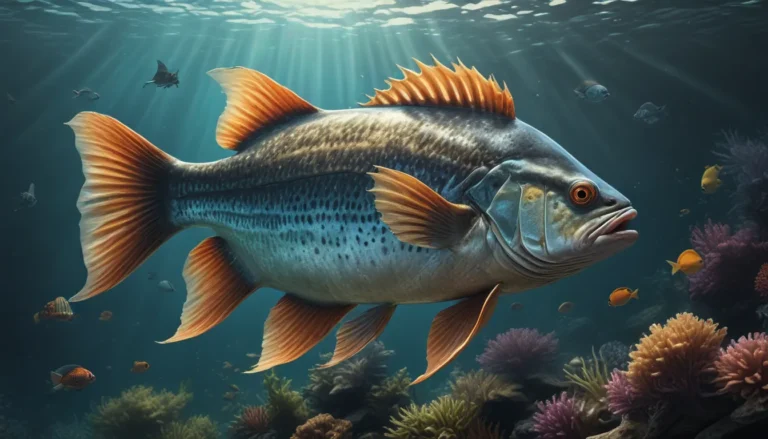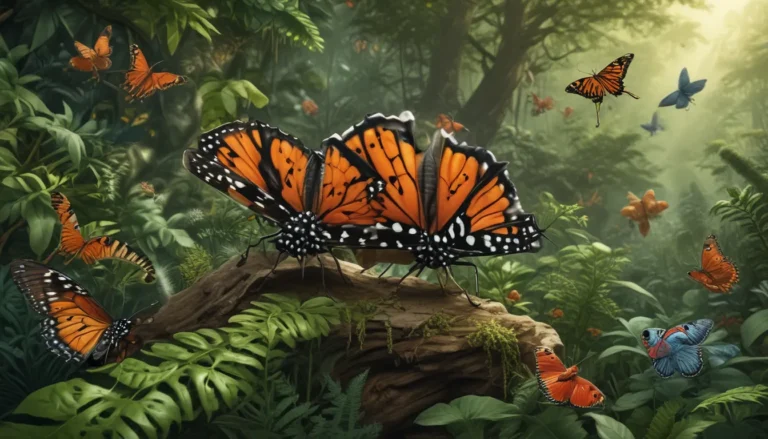A Note About Images: The images used in our articles are for illustration purposes only and may not exactly match the content. They are meant to engage readers, but the text should be relied upon for accurate information.
Dispersal, the movement or spread of individuals, populations, or entire species from one location to another, is a captivating phenomenon that significantly impacts the natural world. While the concept of dispersal may seem simple, there are numerous surprising and intriguing facts about this process that are often overlooked. In this article, we will delve into eight surprising facts about dispersal, uncovering the remarkable ways it shapes the distribution and evolution of life on our planet. Let’s embark on a journey to explore the fascinating world of dispersal!
The Vital Role of Dispersal in Nature
Dispersal plays a crucial role in the survival and distribution of many organisms. It involves the movement of individuals from their birthplace to new locations, allowing them to colonize new habitats, escape competition, and find suitable mates. This vital process ensures the balance of populations and creates genetic diversity, contributing to the overall health of ecosystems.
Diverse Methods of Dispersal in Nature
Organisms employ various methods to disperse and expand their range. Some rely on wind, such as dandelion seeds carried by gentle breezes, while others utilize water transport, like mangrove seeds floating on ocean currents. Animals can disperse through active movement or hitching a ride on other organisms. These diverse strategies influence ecosystems and drive evolutionary changes.
The Spectrum of Dispersal Distances
Dispersal can occur over both short and long distances, with some species traveling only a few meters from their birthplace, while others cover vast expanses. Birds, renowned for their long-distance dispersal capabilities, can cross oceans during migration. This variation in dispersal range contributes to biodiversity and genetic connectivity among populations.
Enhancing Genetic Diversity through Dispersal
Venturing into new territories allows dispersing individuals to introduce new genetic material, enhancing genetic diversity within populations. This genetic exchange helps prevent the accumulation of harmful mutations and contributes to the overall resilience of species. The influx of new genes through dispersal promotes adaptability and evolutionary success.
Initiating Species Colonization through Dispersal
Successful establishment in new areas can lead to the colonization of entire populations or new habitats by dispersing individuals. This process is crucial for ecosystem development and the emergence of new species, shaping the biodiversity and dynamics of ecosystems. Dispersal acts as a driving force for species expansion and adaptation.
Influential Factors Affecting Dispersal Decisions
The decision to disperse or remain in a specific area can be influenced by a variety of factors such as resource availability, competition, predation risk, and environmental changes. For example, individuals may disperse in search of better foraging opportunities during times of food scarcity. These external factors play a significant role in shaping dispersal patterns.
Impact of Dispersal on Population Dynamics
Dispersal significantly influences population dynamics by balancing population densities, preventing overcrowding, and facilitating recolonization after disturbances. Natural events like wildfires or disasters can disrupt populations, but dispersal ensures the movement and redistribution of individuals, maintaining ecosystem stability.
Ecological and Evolutionary Implications of Dispersal
The process of dispersal not only influences ecological interactions but also drives evolutionary changes within species. It promotes adaptation to new environments, diversification into different niches, and even speciation. Dispersal is a key mechanism through which organisms adapt and evolve in response to changing environmental conditions.
Unveiling the Marvels of Dispersal
Dispersal unveils a world of marvels, from the intricate mechanisms of seed dispersal by wind to the astonishing navigational abilities of migratory animals. The ability of marine organisms to traverse vast distances through ocean currents is nothing short of astounding. The unique strategies employed by plants and animals for dispersal showcase the incredible adaptability of life on Earth.
Conclusion: Embracing the Complexity of Dispersal
In conclusion, dispersal is a fascinating and essential process in the biological world, shaping ecosystems and driving evolution. While many aspects of dispersal are well understood, there are still surprising facts waiting to be discovered, revealing the intricacies of this phenomenon. Understanding dispersal is crucial for conservationists, policymakers, and anyone interested in the natural world. By unraveling the mysteries of dispersal, we can make informed decisions to protect and manage ecosystems effectively.
Frequently Asked Questions
Q: Why is dispersal important in biology?
A: Dispersal is vital in biology as it allows organisms to colonize new habitats, find resources, and escape unfavorable conditions, playing a key role in population dynamics and species distribution.
Q: How does wind aid in seed dispersal?
A: Wind aids in seed dispersal by carrying seeds away from the parent plant, allowing them to disperse over a wide area and find suitable environments for germination and growth.
Q: Can dispersal be detrimental to ecosystems?
A: Dispersal can have both positive and negative impacts on ecosystems, maintaining genetic diversity while also introducing invasive species that may disrupt native ecosystems.
As we unravel the wonders of dispersal, we gain a deeper appreciation for the complexity and interconnectedness of life on Earth. Through ongoing research and exploration, we continue to expand our knowledge of this essential process, uncovering new revelations that shape our understanding of the natural world. Join us on this journey of discovery as we celebrate the marvels of dispersal and its profound impact on the tapestry of life.





